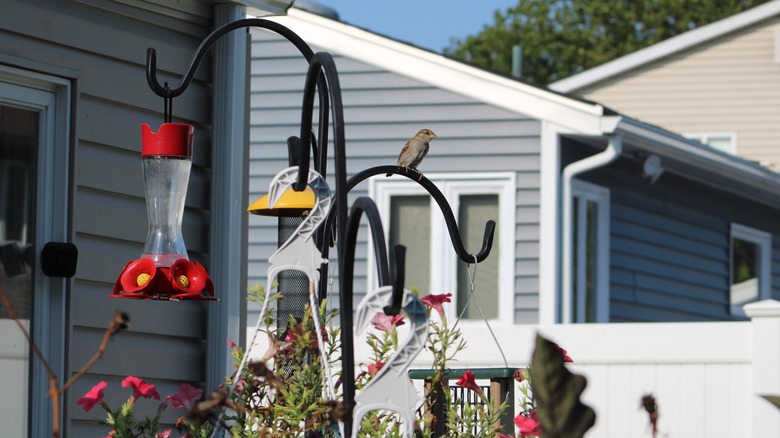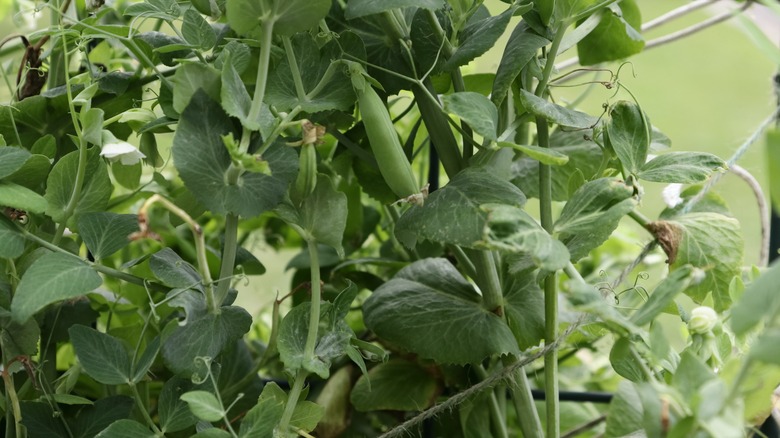Reuse A Shepherd's Hook For A DIY Garden Trellis On A Budget
It's common for gardeners to have a shed filled with miscellaneous tools and gadgets only to go out and buy new materials each year. If that sounds familiar, challenge yourself to reuse a familiar item in your garden next time your plants need a little extra support, since there are plenty of clever ways to repurpose old lawn and garden items into a DIY plant trellis. A helpful hack from @coldcottagegarden on TikTok teaches gardeners how to use a shepherd's hook and simple twine to create a beautiful and functional trellis.
You could create this DIY garden trellis using only reused materials, or you can complete this project with new materials for less than $30, making it among the cheaper DIY trellis ideas. You need a shepherd's hook, which you can get from Lowe's for less than $10, and a ball of textured twine, which you can find at Tractor Supply for less than $4. You'll also need a way to anchor the twine to the ground. Depending on the weight of the veggies or flowers you'll be growing with your trellis, you might choose to use garden stakes, like the ten-pack from Lowe's for less than $10, or you could use landscape fabric staples, retired tent poles, or even sturdy sticks from your yard.
How to create your shepherd's hook trellis
Since your shepherd's hook is your key anchoring force, it's important to start with it completely vertical and properly positioned in the ground. From there, lay out your ideal spacing using your sticks, stakes, or staples. The proper spacing will depend on what plants you're growing and how much space you have. In their TikTok video, @coldcottagegarden mentions that they plant one plant per stake.
Next, attach the textured twine to each stake or stick, and then drape it over the shepherd's hook and attach it to the corresponding stake on the other side. This way, as the plants add weight, the tension will improve on both sides, and you don't have to worry about knots coming loose at the top of your trellis. Once your seedlings start to grow, train them up the trellis to make sure they use the support. This design helps give plants direction while improving airflow and access to sunlight throughout the plant.
Make your DIY garden trellis fit your needs
If you use only a single layer of twine for each leg of your trellis, this DIY garden trellis project is best suited for beans, peas, or very small varieties of cucumbers. In the comment section of their video, @coldcottagegarden mentions that you could make the structure stronger by doubling up the string, but they warn that plants with large leaves could be problematic on windy days. You can also stagger the stakes to avoid creating a wall effect, which would help distribute the weight of your plants as they grow on the trellis.
If peas and beans aren't on your gardening agenda this year, you can also use this trellis design to create a beautiful fairy garden look using vining flowers and LED lights, as one commenter suggests. When you select flowers, opt for varieties that like to climb, and prune them to protect airflow. Black-eyed Susan vine and climbing nasturtium are both climbing options that bring a pop of color to your landscaping, or you could fill your trellis garden with tropical flowers, like queen's wreath.

